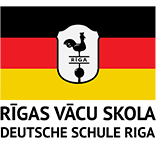Paragraf, a Cambridge University graphene spin-out, has closed a £2.9M (~$ 3.9M) seed round. The funding is led by the university’s commercialization arm, Cambridge Enterprise, with Parkwalk Advisors, Amadeus Capital Partners, IQ Capital Partners and angel investors also participating.
Graphene refers to the one atom-thick latticed carbon material that’s been exciting scientists with its potential for more than a decade. Although turning a nanomaterial with transformative promise into practical and robust commercial products has not turned out to be a cake walk.
Paragraf reckons it’s onto something that can help accelerate developments though, having come up with what it says is a novel (and patent-protected) approach to manufacturing graphene for commercial use-cases — so in larger and better quantities and qualities than the small flakes that have typically been the production rule so far.
The team claims their technique overcomes a raft of problems which have stymied graphene developments to date, such as poor uniformity, reproducibility, limited size and material contamination.
Their wider focus is on producing atom-layer thick 2D materials — with graphene their starting points — for the development of a new generation of electronic devices. And early claims for the nanomaterial included suggestions that it could enable a new generation of flexible, transparent electronics.
“Harnessing the extremely high conductivity, superb strength, very low weight and ultimate flexibility of graphene, Paragraf’s technology is the first ever commercial-scale method validated to reproducibly deliver functionally active graphene with properties targeted to its final device-specific application, with both high quality and high throughput,” is the team’s claim for their approach.
The business has been spun out of the Centre for Gallium Nitride group of Professor Sir Colin Humphreys in the university’s department of materials science. According to Crunchbase Paragraf was founded in 2015.
So far they say they’ve produced layers of graphene with electrical characteristics optimized for producing “very sensitive detectors at commercial scale”, as well as “improved efficiency contact layers for common technologies such as LEDs”.
Among their targets for graphene devices are transistors, where they reckon the nanomaterial could deliver clock speeds several orders of magnitude faster than silicon-based devices; chemical and electrical sensors, where they say it could increase sensitivity by a factor of >1,000; and novel energy generation devices — arguing graphene could tap into “kinetic and chemical green energy sources yet to be exploited by any other technology” (so chalk up another wonder claim).
Of course those are all yet more miraculous sounding claims being made for graphene — the likes of which have been liberally attached to the substance for years. And Paragraf still faces the hard graft of proving out their claims. So it’s a pretty safe bet that multiple years of R&D are still needed before mass market graphene based devices are within the average consumer’s grasp.
Commenting on the funding in a statement, Hermann Hauser, co-founder of Amadeus Capital Partners, said: “Graphene has demonstrated some remarkable achievements in the lab, showing great promise for many future electronic technologies. However, without a pathway to commercial viability, scaling from proof of concept to end user accessible products remains beyond the horizon. Paragraf’s novel approach to two-dimensional materials fabrication brings the possibility of mass market graphene based devices a step closer to reality.”
In another supporting statement, Dr Simon Thomas, CEO and co-founder of Paragraf, added: “There’s no doubt that the electronic, mechanical and optical properties of two-dimensional materials such as graphene have the potential to significantly increase performance in a multitude of state of the art technologies. However, until materials like graphene can be delivered in commercially viable, device compatible, functionally targeted forms, the achievements demonstrated at lab scale will not be transferred to real-world products. At Paragraf we have developed the first production technique that allows true scaling of graphene based devices.”




























